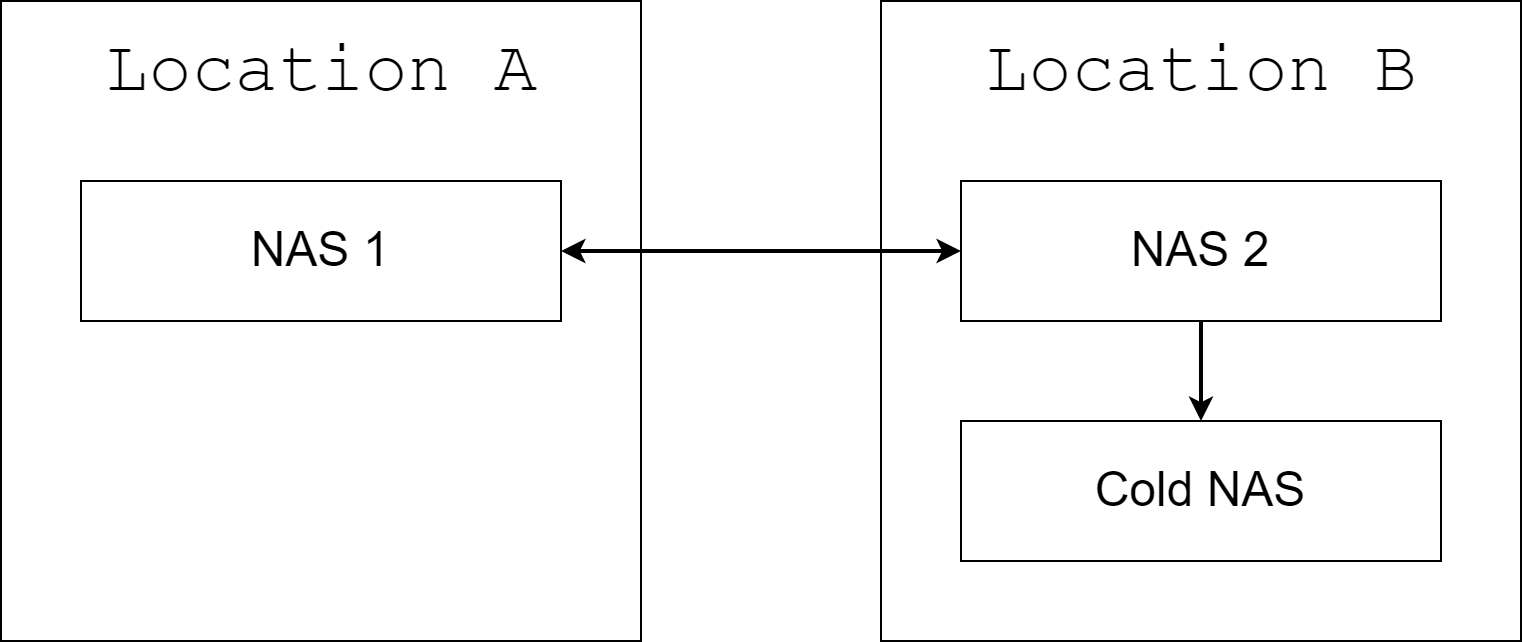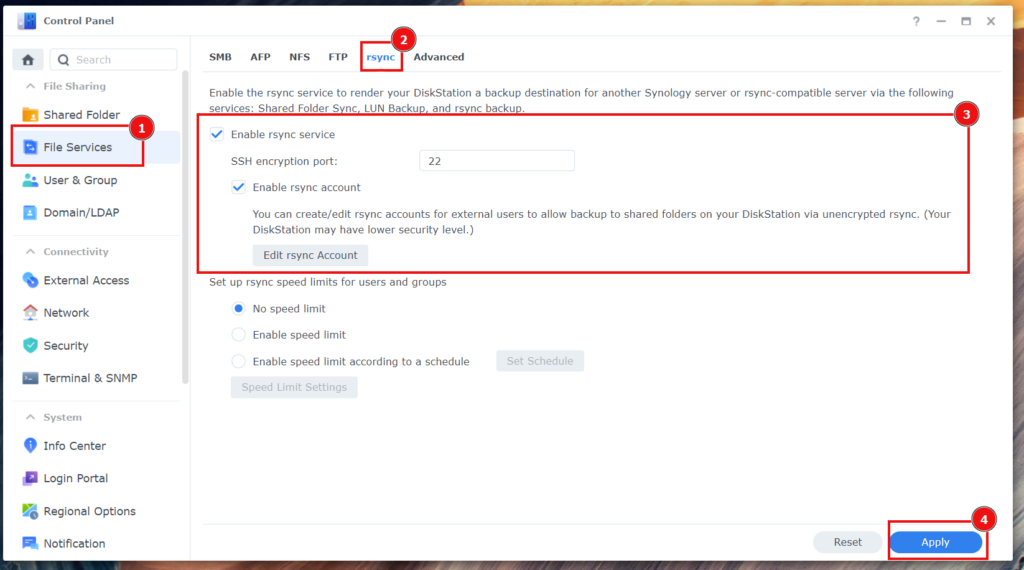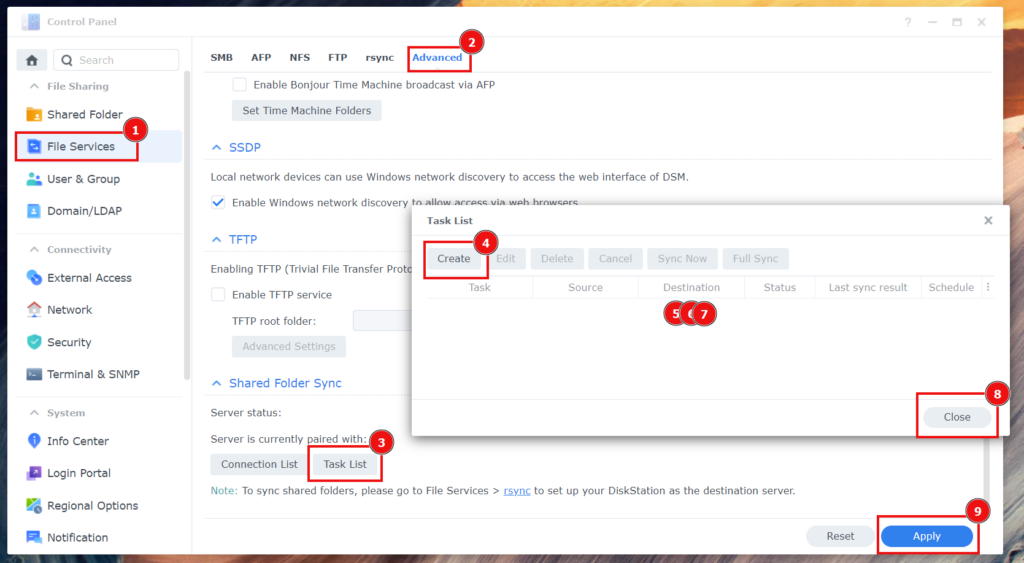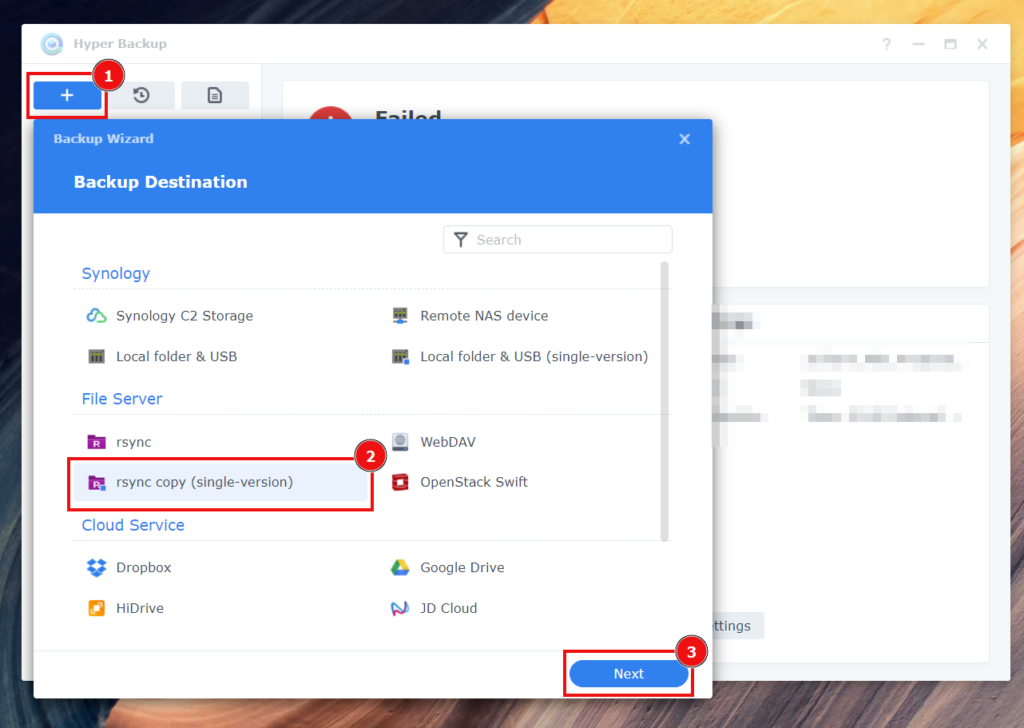Motivation
Everybody knows that situation: you have 2 or more independent Locations, a bunch of Synology NAS Devices and Terrabytes of Family Photos, Important Documents and Linux ISOs and you want to back them up. Also you want a reliable backup solution for which you don´t want to pay a monthly fee, you already payed for all those Synology Devices after all.
You are well aware that the cloud is just someone else´s Computer. You are also scared about the possibility of beeing a victim of a devastating ZeroDay-Attack like the one that happened on many QNAP-Devices a few years ago. Thats why you need a Cold-NAS.
For this guide you do not need extended knowledge of networking and you don´t need to be a penguin wizard. Also no coding skills required.
What is cold storage?
Cold Storage is not online all the time. In this example I implement cold storage by having a NAS that only gets booted up once in a while to sync the data to it. Then it gets powered down for a month or two.
Why would you need cold storage? In case of a Zeroday Attack which encrypts all online NAS-Devices. Could that ever happen? Yes, just have a look at the Zeroday that happened to QNAP Devices a few years ago. Many users lost all their precious data. https://www.qnap.com/static/landing/2021/qlocker/response/da-dk/
What is 3-2-1 Backup?
The 3-2-1 backup strategy is a simple yet effective rule for safeguarding your data against almost any disaster scenario. It entails having at least three total copies of your data. These backups should be on two different types of media or platforms, to protect against device or system failure. Finally, one of these copies should be stored off-site or in the cloud, ensuring that even if a physical disaster (like a fire or flood) destroys your local copies, there’s still a remote backup safely tucked away.
Now, we don´t technically have 2 types of media, but I consider the Cold NAS to be the other type. It is basically tape without tape (-;
Setup
Overview
This is how our basic setup is going to look like:

At each of our location we have a Synology NAS device. At our Location B we also have our “Cold-Storage” NAS.
How to connect the main NAS-Devices?
In the following I am going to use the terminology of a primary and a secondary device. In our graphic they are NAS 1 and NAS 2. After setup they can be considered as equal.
Depending on the usage of a Shared Folder there are different ways to sync its contents:
Synology Drive ShareSync
This is the easiest implementation. It is useful for syncing shares that are already managed by Synology Drive (Synced to Laptops or Desktop Computers).
With Synology Drive ShareSync you basically connect the Secondary Synology NAS to the primary one like you would a Laptop or PC. Secondary NAS:

TIPP: On secondary NAS you can also make that synced folder available through Synology Drive Admin Console.
Shared Folder Sync
This is a bit harder but it has the benefit that the folder does not need to be indexed by Synology Drive. You could use this to sync Linux ISOs for example. For this method it is also benefitial to have a Site2Site Tunnel between your locations, because it uses RSYNC in the background wich goes over Port 22/ssh and it is not whise to publish that port to the internet.
On the primary device enable rsync:

On the secondary device setup the rsync task:

When you have created a task you can see it on the main device when it is currently syncing data.
How to setup the Cold NAS
Nothing would prevent you from setting up the Cold NAS the same way, but I want my cold NAS to only be a backup target by deafult. That means I don`t normally want to sync Data from the Cold NAS back to a main NAS. That is why I used Hyper Backup on my NAS 2 to create a RSYNC Job:

I just configured it to run daily. Most days it is going to fail, since the Cold NAS is mostly not online but i don´t care about that.
How to start and boot down the Cold NAS
I personally use my Homeassistant Smarthome to turn on the Smart Socket of my NAS. The NAS is set to boot up automatically when power is connected. You could also boot it up using WOL, but I personally found that to be unreliable. I boot the NAS at Midnight and the rsync backup job starts at 1AM.
Shutdown is facilitated over a script that runs on my Homeassistant. It looks for low traffic on the connected port on the ethernet switch and turns off the NAS after an hour of bandwidth below 5Mbit/s.
Considerations for Cold NAS
When first filling it with data it typically needs to stay on for more than a day.
In my opinion this device does not have to contain the best components, since it only gets used rarely. For cost saving measures I don´t configure it with a RAID. Also the RAID would not be very happy if it gets turned on and off all the time. It typically relies on regular “cleanup” and checksumming work to stay healthy.
Since I want the Cold NAS to be as little of a target as possible I uninstalled most services. I don´t use Quickconnect since it is a potential liability.
Why Synology?
I know that Synology Devices are very expensive compared to the hardware you get in them. But I believe when buying a Synology NAS you pay for the software. I found it to be very stable and having very long hardware support. The software and apps are the best part of the Synology-Experience.
Buying used is a great option to save on the cost. I have had great experience with used Synology products. I would buy a used Synology Diskstation with new drives. Speaking from experience, when a Diskstation dies your data is not lost. Just pop the drives into the new NAS and it will restore without a problem.
The time and headache I save is worth the money to me. I hate data-loss. However there is also an argument to be made for building your own DIY-NAS and learning in the process.
Conclusion
I wish you a pleasant day, no bandwidth cap and happy syncing!
PS: I know I have just explained the setup on a very high level. If you want a detailed guide on how to set it up please leave a comment.
PPS: If you are a Student and get a 5TB Onedrive from your scool or university you can use that to backup your Synology NAS as well. Use Cloud Sync to sync from and to any Cloud Storage you desire!

Then you will have a second medium (-;